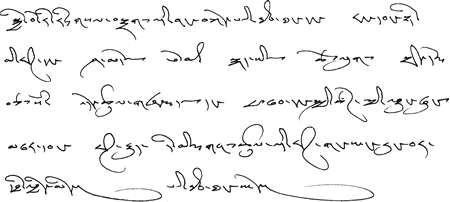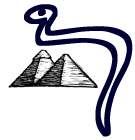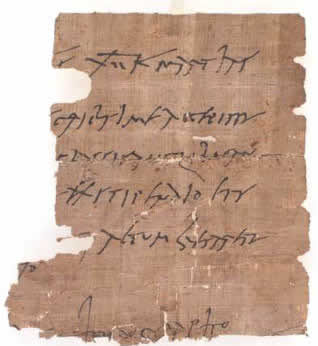Here’s a recording of a short conversation in an mystery language. Can you figure out which language it is? Any idea what it’s about?
Month: February 2007
Language quiz
Bilingual toys
According to an article in The Boston Globe, there has been a significant increase in the sale of bilingual toys in the USA. These are toys the speak words and phrases and sing songs, and which are designed to help young children to learn languages. The most popular language combination is English and Spanish, which doesn’t come as much surprise given that there are nearly 48 million people of Hispanic origin in the United States. There are also toys that speak Chinese, Russian, Korean, Greek, Hebrew and various other languages.
A related article gives more details and mentions that toy manufacturers are bringing out bilingual phones, globes, dolls, books and laptops. A market niche toy companies didn’t expect was the parents of children adopted from other countries, who are keen on toys that speak the languages of their children as this helps ‘bridge the gap between the two countries’.
If kids get an early start with learning languages, and see it as something enjoyable, this bodes well for their future.
Do any of you know if there are any bilingual or multilingual computer games?
The language of flowers
A Chinese contact I talked to today mentioned that he gave his girlfriend 11 red roses yesterday. I asked whether the number of roses had any significance, and he told that it stand for “一心一意” (one heart, one desire). This got me think about the meanings attached to different flowers.
I found a site about ‘the language of flowers‘, which explains the meanings of a variety of flowers. Apparently during the Victorian age (1837-1901), a knowledge of floriography, as it was called, was as important to people as being ‘well dressed’. It wasn’t just the variety of flower that carried a meaning, but the number, colour and arrangement, and also the way they were presented – giving a flower with the right hand signified ‘yes’, while giving one with the left hand signified ‘no’, for example.
Here are a few examples: red roses signified love, respect and/or beauty; yellow roses joy, jealousy, friendship (one yellow rose with 11 red ones meant love & passion); orange roses fascination; and deep red roses bashfulness or shame. A single cherry blossom stood for education; a white chrysanthemum for truth; lupine for imagination; and a shamrock for lightheartedness.
Tut tut
The click sounds I mentioned yesterday are only found in a small number of languages spoken in southern Africa. Somewhat similar sounds, known as interjections, are used in others languages, though not as in the role of consonants. Instead they convey various extra information about the speaker’s mood or opinion.
For example, in English you might tut or tsk when you’re irritated by something. Whistles can be used to indicate appreciation or surprise, among other things, and the sucking of air through the teeth is often a sign that more money than was originally expected is likely to change hands, especially when employed by a car mechanic or a builder. Ah ha! can be used to show that you’ve understood something; huh!? for incomprehension; ow! when you hurt yourself; oh! for surprise; um when you’re not sure what to say; and oh for disappointment, as in “oh well, never mind (put the kettle on/have a nice cup of tea)” – very British expression that one!
What interjections in your language, and how are they used?
Click click
On the radio this morning they told an interesting, language-related story about David Attenborough, the famous maker of natural history programmes. Apparently he filmed people speaking one of the ‘click’ languages for a programme called The Tribal Eye, which examined sculpture, weaving, metal casting, and other artistic activities in tribal societies around the world. After working on the sound track for quite a while, the sound engineer proudly announced that he had managed to clean up all the strange clicking sounds in the background – he didn’t realise that they were an integral part of the language.
There are some sample recordings of click languages here.
Do any of you speak or have you studied a language that includes click consonants?
My language studies
I’ve decided to try a slightly different approach to my language studies. Up till now I’ve been listening to Irish, Scottish Gaelic and Welsh language radio for several hours each almost every day. In the evenings I read novels in either Welsh or Irish, and also learn a bit more Czech. I’ve also been learning songs in the Celtic languages, particularly Irish.
This week I’ll be concentrating on one language for two days at a time. So today and tomorrow I’m focusing on Welsh – listening to Radio Cymru during the day and going through a lesson in Cadw Sŵn in the evening. On Wednesday and Thursday I’ll be listening to Radió na Gaeltachta during the day and studying from Turas Teanga or another of my Irish courses in the evening. Then on Friday and Saturday I’ll listen to Radio nan Gaidhael and study from one of my Scottish Gaelic courses in the evening.
I’ll continue to study some Czech every day, to read Irish, Welsh and maybe even Scottish Gaelic novels, and to learn songs. By the way, can any of you recommend any good novels in Celtic languages, or in French, German, Spanish or Chinese?
Welsh, Irish and Scottish Gaelic are the languages I most want to become fluent in at the moment. My other languages are less of a prioity, though I do get to practise Mandarin, Japanese and Spanish quite often on Skype and MSN.
Name the language
Here is a recording of a song (2MB) in a mystery language, and a recording of speech in the same language. Any ideas what language it is?
This is a language with a relatively small number of speakers with no official status.
Name the language
Here is text in a mystery language. Can you work out which language and alphabet it’s written in?

This text was sent in by Andrew A. Clark.
If you have any texts in obscure scripts or languages that could be used for my language quiz, please send them to the usual address.
Snakes and pyramids

Some time between about 3000 and 2500 BC, Canaanite people working in Egypt adapted Egyptian Hieroglyphs to write their Semitic language, which was the ancestor of Phoenician, Moabite, Ammonite and Hebrew. They used a small number of hieroglyphs to represent the consonant sounds of their language and created what was probably the first alphabetic script. Many of the alphabets we used today are descendants of that first abjad.
According to ScienceDaily, a text written partly in this ancient script has finally been deciphered after confounding scholars for over a century since it was discover on the wall of the pyramid of King Unas at Saqqara in Egypt. One reason why it was so difficult to decipher was that everyone had assumed that the text was in Ancient Egyptian. However in 2002, Robert Ritner, professor of Egyptology at the University of Chicago, realised that part of the text was in another language, and this enabled Prof. Richard Steiner, professor of Semitic languages and literature at Yeshiva University in New York, to figure out that the text contained both Ancient Egyptian and an ancient Semitic language, and to decipher it.
The text is thought to be a spell to protect royal mummies against poisonous snakes and reads “Utterance of rir-rir mother snake, mother snake.” The words “rir-rir” refer to the drivel, the venom of the snake.
